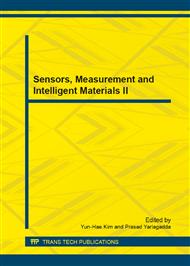p.1307
p.1311
p.1320
p.1325
p.1329
p.1334
p.1340
p.1344
p.1351
Preparation of Sorbent Loaded with Nano-CuO for Room Temperature to Remove of Hydrogen Sulfide
Abstract:
In this paper, an efficient metal oxide sorbents for the deep removal of H2S were synthesized using equal volume impregnation (EVIM) method. Modified coconut shell charcoal was selected as support to deposite the particles of copper oxide onto the surface. And copper nitrate were selected as the active component precursors in the preparation process of sorbents. Sorption experiments were carried out at room temperature in fixed-bed reactor. The grain size and crystal form of loading metals were characterized by X-ray diffraction (XRD). We investigated the effects of modifier onto coconut shell charcoal, load rate of metal oxide and calcination temperature on the desulfurization activity of the sorbent. Results show that the best modifier for coconut shell charcoal is KOH, which is significantly better than the other modifiers. And the optimum load rate is 20%(wt), the optimum calcination temperature is 300°C. Copper oxide onto the surface of modified coconut shell charcoal proved to be monoclinic nanoparticles with grain size of 18.7nm. Sulfidation test was carried out on the condition of i) the concentration of hydrogen sulfide gas (mixed with nitrogen ) is 1024.2ppm and ii) gas velocity is 20ml/min, iii) 0.1g sample in the middle of the fixed-bed reactor (length: 450 mm, interior diameter: 5 mm) to test. The sample show excellent sulfur removal efficiency and its breakthrough time is up to 287 min on this condition.
Info:
Periodical:
Pages:
1329-1333
Citation:
Online since:
December 2013
Authors:
Keywords:
Price:
Сopyright:
© 2014 Trans Tech Publications Ltd. All Rights Reserved
Share:
Citation:


